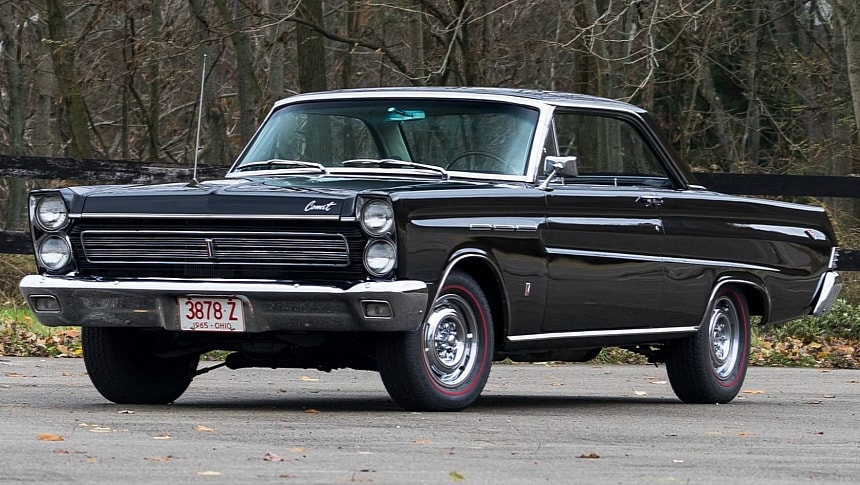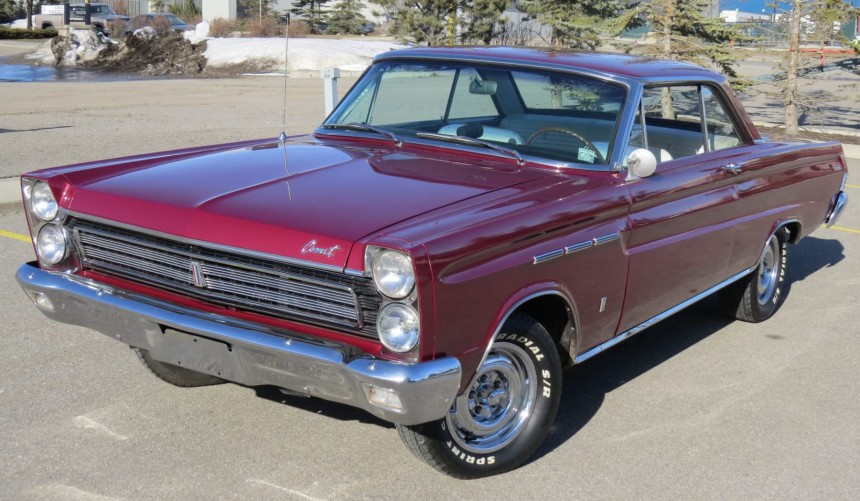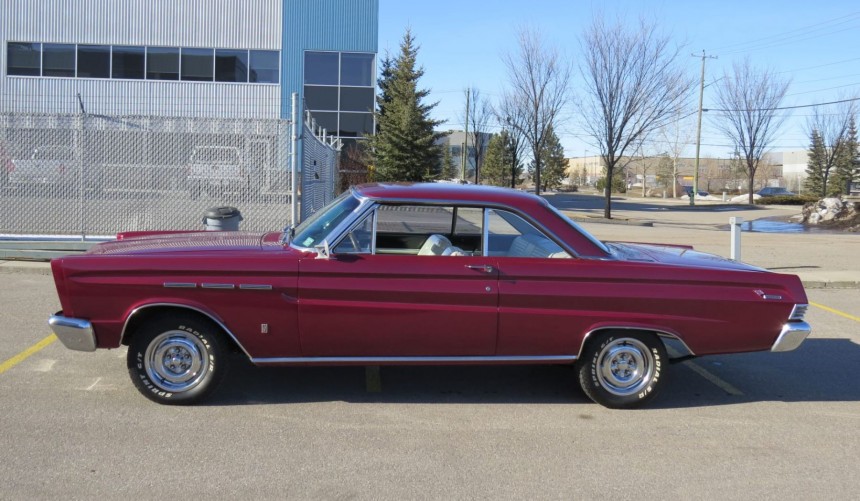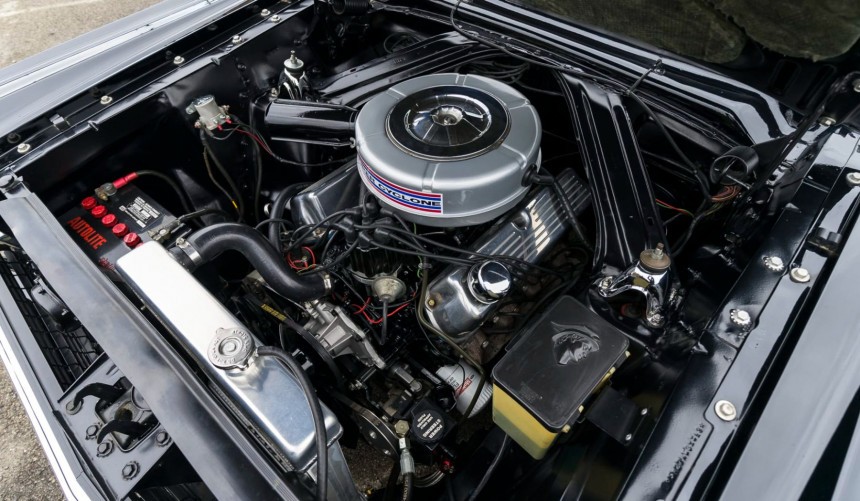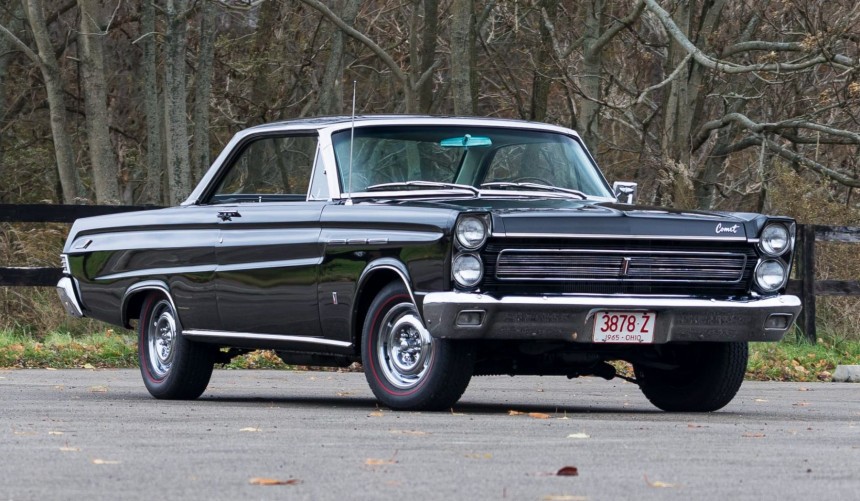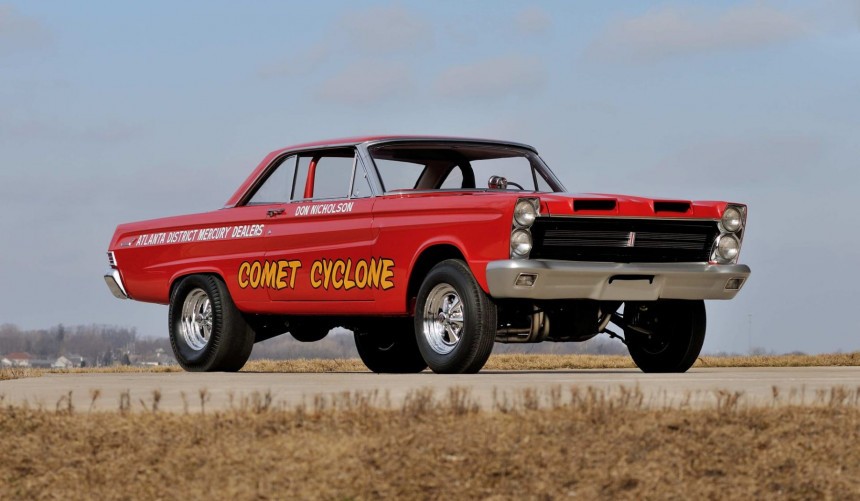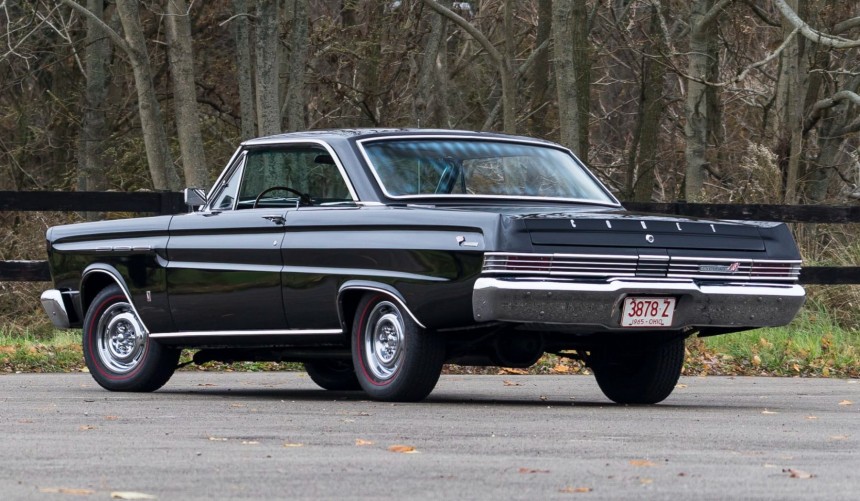Back when Mercury models were much more than just rebadged Fords, the Cyclone added some serious muscle to the upscale division's already popular lineup.
Defunct since 2011, Ford's Mercury division enjoyed a period of great success during the 1950s and 1960s.
Position in the middle of the FoMoCo hierarchy, ahead of Ford but behind Lincoln in terms of prestige, Mercury successfully marketed well-built and reliable cars with distinct design cues that made them far more than just rebadged Ford clones.
Moreover, the brand joined the muscle car craze from the onset, delivering a series of memorable tire shredders that became icons of the era.
Today, the most famous Mercury muscle cars from the division's glory years are the first-generation Cougar, particularly in GT or Eliminator guises, and the third-gen, Ford Torino-based Cyclone.
However, several years before those legendary models hit the streets, the original Cyclone was based on the second-gen Comet compact—or senior compact, to be more accurate.
The Comet debuted for the 1960 model year as an all-new upscale senior compact based on a stretched version of the Ford Falcon.
For the first two years, it was marketed without division badges, but that changed from 1962 onwards when the Comet joined the Mercury lineup.
The first generation was produced until the end of 1963, after which it was thoroughly redesigned. With a far more square-ish look and slick lines, the second-generation Comet was often compared to a smaller version of the Lincoln Continental.
Thorough redesign aside, the most exciting news for Mercury fans was the decision to add serious performance to the Comet's resume.
To do that, the division introduced a new performance-oriented trim dubbed Cyclone that featured a standard 289 cu in (4.7-liter) V8 rated at 210 hp.
Even more impressive, it developed 50 lightweight, ultra-high-performance Comet Cyclones meant to rule the drag strip. With twin four-barrel-carburetor 427s stuffed under bespoke fiberglass hoods, these special Cyclones cooked up using Ford's Thunderbolt recipe dominated the NHRA's A/FX class at the hands of legends such as Ronnie Sox, "Dyno Don" Nicholson, and "Wild Bill" Shrewsberry.
For the 1965 model year, the Comet lineup received another series of upgrades.
Visually, the front and rear fascias were restyled with cues borrowed from the model's full-size siblings, becoming more stylish but also more aggressive.
In the engine department, most available units, including the Cyclone's 289, received a performance boost.
Like the 1964 iteration, the 289 was built around a remarkably durable precision-cast alloy iron bock with five main bearings.
However, it was now equipped with a Ford C5MF-9510-A four-barrel carburetor that, along with a compression ratio of 9.30:1, enabled the V8 to produce 225 hp at 4,400 rpm and 305 lb-ft (413 Nm) of torque at 3,200 rpm.
Even more impressive, buyers who wanted more factory performance could get the legendary HiPo (High Performance) version of the 289 via a District Special Order (DSO) available through select Mercury dealerships.
Though it came with an "A" in the VIN, the Comet Cyclone's 289 HiPo was the exact same unit as the Mustang's notorious K-code.
With solid lifters, a 10.0:1 compression ratio, and a bigger Autolite 4100 carburetor, the HiPo, marketed as the Super Cyclone V8, gave the 1965 Cyclone 271 hp and 312 lb-ft (423 Nm), turning it into a genuine muscle car.
Like the standard 289, the HiPo was linked to a four-speed Toploader manual, but while the legendary transmission was optional on the 225-hp small-block V8, which came with a three-speed as standard or an optional Merc-O-Matic three-speed automatic, for the HiPo, it was the only gearbox available.
Regardless of the engine choice, the 1965 Comet Cyclone package included thicker brake drums and Ford's bombproof 9-inch rear end, but cars equipped with the Super Cyclone engine also got stiffer front springs, a quick-ratio steering box, and 4.11 rear differential gearing.
Available only as a two-door hardtop, the Cyclone could run the quarter mile in a decent 17.1 seconds when equipped with the standard 225-hp 289.
With the 271-hp A-code under the hood, its quarter-mile prowess improved to the high-15-second range, which enabled the Cyclone to go toe-to-toe with more powerful muscle cars.
In addition to improving the performance of its street-legal Comet Cyclone, Mercury continued to advertise the model in the NHRA Factory Experimental series.
To that aim, it created the limited-edition Super Cyclone, which, compared to its street-legal sibling, was an absolute rubber-burning monster.
With the infamous 700+ hp 427 SOHC "Cammer" crammed under its twin-scooped fiberglass hood, the Super Cyclone driven by the likes of "Dyno Don" Nicholson became one of the most legendary drag strip warriors of the 1960s.
During the 1965 model year, Mercury sold about 400 Comet Cyclones. Of those, only around 90 received the Super Cyclone (HiPo) 289.
Today, a surviving example in great shape is extremely rare, but despite that, its average only exceeds $25,000 when equipped with the A-code V8. In this case, a pristine example like the one pictured above goes for over $50,000.
While it wasn't Mercury's first high-performance model, the Comet Cyclone was the division's first genuine muscle car of the 1960s.
Grossly underrated then and now, it set the stage for the legendary Mercs that debuted during the following model years, like the high-powered versions of the Cougar or its direct successor, the Torino-based Cyclone.
For a detailed look at this forgotten Mercury legend, we recommend watching the YouTube video below by Muscle Car Campy.
Position in the middle of the FoMoCo hierarchy, ahead of Ford but behind Lincoln in terms of prestige, Mercury successfully marketed well-built and reliable cars with distinct design cues that made them far more than just rebadged Ford clones.
Moreover, the brand joined the muscle car craze from the onset, delivering a series of memorable tire shredders that became icons of the era.
Today, the most famous Mercury muscle cars from the division's glory years are the first-generation Cougar, particularly in GT or Eliminator guises, and the third-gen, Ford Torino-based Cyclone.
However, several years before those legendary models hit the streets, the original Cyclone was based on the second-gen Comet compact—or senior compact, to be more accurate.
A brief history of the Comet Cyclone
For the first two years, it was marketed without division badges, but that changed from 1962 onwards when the Comet joined the Mercury lineup.
The first generation was produced until the end of 1963, after which it was thoroughly redesigned. With a far more square-ish look and slick lines, the second-generation Comet was often compared to a smaller version of the Lincoln Continental.
Thorough redesign aside, the most exciting news for Mercury fans was the decision to add serious performance to the Comet's resume.
To do that, the division introduced a new performance-oriented trim dubbed Cyclone that featured a standard 289 cu in (4.7-liter) V8 rated at 210 hp.
Even more impressive, it developed 50 lightweight, ultra-high-performance Comet Cyclones meant to rule the drag strip. With twin four-barrel-carburetor 427s stuffed under bespoke fiberglass hoods, these special Cyclones cooked up using Ford's Thunderbolt recipe dominated the NHRA's A/FX class at the hands of legends such as Ronnie Sox, "Dyno Don" Nicholson, and "Wild Bill" Shrewsberry.
Pushing the street performance envelope even further
Visually, the front and rear fascias were restyled with cues borrowed from the model's full-size siblings, becoming more stylish but also more aggressive.
In the engine department, most available units, including the Cyclone's 289, received a performance boost.
Like the 1964 iteration, the 289 was built around a remarkably durable precision-cast alloy iron bock with five main bearings.
However, it was now equipped with a Ford C5MF-9510-A four-barrel carburetor that, along with a compression ratio of 9.30:1, enabled the V8 to produce 225 hp at 4,400 rpm and 305 lb-ft (413 Nm) of torque at 3,200 rpm.
Becoming a genuine muscle car
Though it came with an "A" in the VIN, the Comet Cyclone's 289 HiPo was the exact same unit as the Mustang's notorious K-code.
With solid lifters, a 10.0:1 compression ratio, and a bigger Autolite 4100 carburetor, the HiPo, marketed as the Super Cyclone V8, gave the 1965 Cyclone 271 hp and 312 lb-ft (423 Nm), turning it into a genuine muscle car.
Like the standard 289, the HiPo was linked to a four-speed Toploader manual, but while the legendary transmission was optional on the 225-hp small-block V8, which came with a three-speed as standard or an optional Merc-O-Matic three-speed automatic, for the HiPo, it was the only gearbox available.
Packing a powerful punch
Available only as a two-door hardtop, the Cyclone could run the quarter mile in a decent 17.1 seconds when equipped with the standard 225-hp 289.
With the 271-hp A-code under the hood, its quarter-mile prowess improved to the high-15-second range, which enabled the Cyclone to go toe-to-toe with more powerful muscle cars.
The A/FX Super Cyclone
To that aim, it created the limited-edition Super Cyclone, which, compared to its street-legal sibling, was an absolute rubber-burning monster.
With the infamous 700+ hp 427 SOHC "Cammer" crammed under its twin-scooped fiberglass hood, the Super Cyclone driven by the likes of "Dyno Don" Nicholson became one of the most legendary drag strip warriors of the 1960s.
A forgotten Mercury icon
Today, a surviving example in great shape is extremely rare, but despite that, its average only exceeds $25,000 when equipped with the A-code V8. In this case, a pristine example like the one pictured above goes for over $50,000.
While it wasn't Mercury's first high-performance model, the Comet Cyclone was the division's first genuine muscle car of the 1960s.
Grossly underrated then and now, it set the stage for the legendary Mercs that debuted during the following model years, like the high-powered versions of the Cougar or its direct successor, the Torino-based Cyclone.
For a detailed look at this forgotten Mercury legend, we recommend watching the YouTube video below by Muscle Car Campy.
